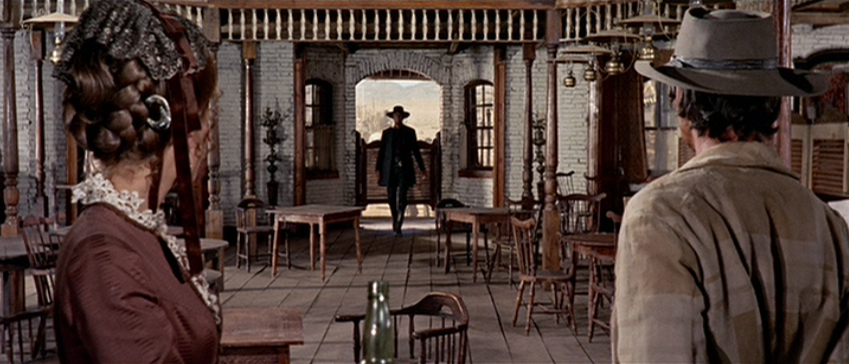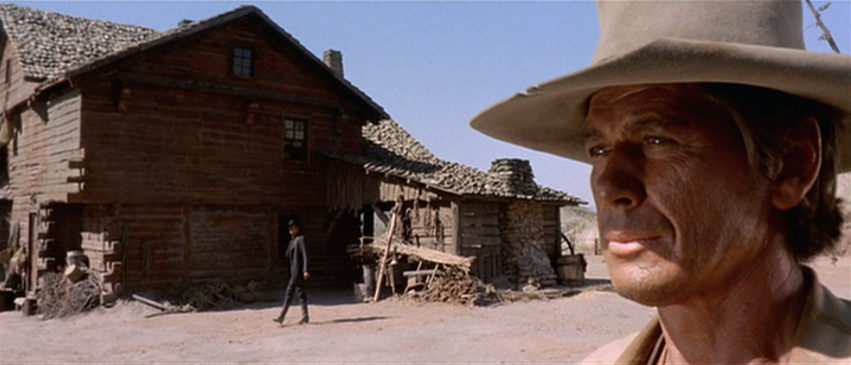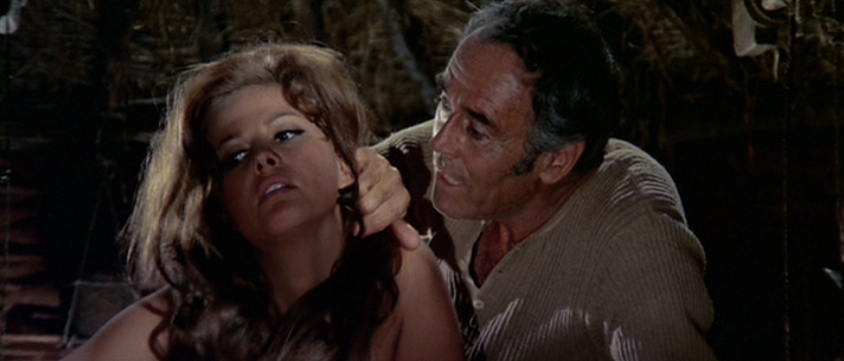Unsung Heroes: The Cinematography of 'Once Upon a Time in the West'
 Thursday, August 11, 2011 at 10:12PM
Thursday, August 11, 2011 at 10:12PM Michael C. here with the second season finale of Unsung Heroes. A recent obsession with the music of Ennio Morricone led me to the perfect subject, which manages the tricky feat of being both a landmark achievement and the work of an artist who is still somehow underappreciated.

When Orson Welles finished Citizen Kane he was so grateful for Gregg Toland’s contributions to the film that he took the largely unprecedented step of sharing his title card with his cinematographer. I think it can be argued that the subject of this week’s episode of Unsung Heroes, cinematographer Tonino Delli Colli, was worthy of similar recognition. Delli Colli shot all of Sergio Leone’s famous spaghetti westerns climaxing in Once Upon a Time in the West (1969), which many, myself included, consider their masterpiece. Yet I rarely, if ever, hear recognition extended past Leone the way I do with the cinematographers of other great auteurs, even though Delli Colli played a large role in creating one of the most iconic and influential visual styles in film history.
Has anyone ever photographed sunlight to such powerful effect as Delli Colli? The heat and light in his westerns is infinite, baking everything to a dry, brown crisp. I wonder if his name is not as renown as other greats like Vittorio Storaro or Gordon Willis because they used darkness and shadow so memorably, while Delli Colli painted almost entirely with brightness. Even the shadows in Once Upon a Time appear scorching. I’ve read people credit the arid, flat Spanish landscape for the distinctive feel of Leone’s westerns, yet scenes in Once Upon a Time are shot in the heart of John Ford’s legendary Monument Valley and Delli Colli manages the same harsh, parched feel there as in the rest of the film.

Leone was a perfectionist when it came to making sure the images on the screen exactly matched those in his imagination, and he preferred to work repeatedly with the same collaborators, like Delli Colli, whom he could count on to operate at a high level without fail. There is a wonderful moment in the DVD documentary on Once Upon a Time where a now elderly Claudia Cardinale begins, “Tonino Delli Colli…” then gets a distant look in her eyes, smiles and says simply “He knew how to light me.”
(On a side note, I think Delli Colli was worthy of the Oscar in ’69 for West if only for his lighting of Cardinale whom he pushes into serious Marilyn Monroe territory in the film. I mean wow.)

I suppose my idea here isn’t to call attention the visuals in Once Upon a Time in the West, which need no help from me being recognized as a monumental achievement, so much as it is to draw a big red circle around Delli Colli’s name. His work with Leone represents one of the great director-cinematographer partnerships along with the likes of Kubrick-Alcott or Coens-Deakins or Powell-Cardiff. No list of the greats is complete without his name.

Season Two of Unsung Heroes: Minority Report, The Adventures of Robin Hood, Hedwig and the Angry Inch, Glengarry Glen Ross, Searching for Bobby Fischer, Zodiac, Oldboy, The Iron Giant, I’m Not There, The Hustler, The Royal Tenenbaums, This is Spinal Tap, and Amelie



Reader Comments (11)
I agree with almost everything you said accept the Cardinale-Monroe thing... Claudia Cardinale is way out of Marilyn Monroe's league. Way out of her league. I cite Visconti's masterpiece, The Leopard as exhibit A
I need to publicly say THANK YOU to Michael for this series. I always look forward to reading them even when i haven't seen the film. Adding this to my queue due to the Cardinale comments ;)
This post reads to me as a love letter to spherical cinematography. West is shot in the Techniscope format created by Technicolor. Film uses 4 perforations. Techniscope only uses 2. The Fighter is the most recent high profile example of a 2-perf (Super 35) cinematography.
Casey - ditto!
This movie a masterpiece in every sense of the word. I am always impressed by edting in Leone's movies. Very slow-paced but superbly clinical. Every shot is perfectly joined by the following one and the pace is slow and still engaging and tense.
I think everything is very Leone, like the work of every technician is strongly determined by his creative mind. I don't think he ever gave any room to his collaborators to think by themselves, but the way they all work for his auterial vision is brilliant. Or maybe they all knew how to please Leone, how to make everything the way he'd like. (That's the case of Morricone, for sure)
That's why you don't hear much about his collaborators. Leone is very Hitchcock, a perfeccionist, and perfeccionist directors tend to obscure evryone around them.
I love Cardinale here, but her great western moment is in Richard Brooks' The Professionals. BRILLIANT performance (and Burt Lancaster was so great, so great).
Great to se Tonino Delli Colli being heralded - he did such fantastic work. Just one thing re: your article: he was actually only the cinematographer on two of Leone's spaghetti Westerns (this and The Good, the Bad and the Ugly - as well as Once Upon a Time in the West) - so it's probable that Massimo Dallamano, who shot Fistful of Dollars and For a Few Dollars More, should take a fair amount of credit for the Leone 'look'. Sorry to be picky!
I think Delli Colli was unlucky not to get nominated for any Oscars (though he won plenty of other awards in his career). The cinematography in The Good, the Bad..., Once Upon a Time in the West and The Name of the Rose is superb...
Thanks for this, Michael, really enjoyed the read! Totally agree with everything you say about Delli Colli and the film. It always frustrates me that a lot of people consider 'The Good, the Bad & the Ugly' Leone's best and most famous movie, when 'West' is, in my humble opinion, not only his (and Morricone's!) greatest work, but one of the greatest films of all time, full stop. I haven't seen it on the big screen yet, but I'm sure it must be breathtaking.
Thank you Michael-this movie is my obsession. There is nothing about it that I don't immediately fall deeply for, from that opening scene to the ridiculously lush score to the four principles-I always say that an actor is truly doing his or her job when they are famous and yet I leave the theater referring to them by their character name instead of their actor name. And for me this is never Fonda, Cardinale, Bronson, and Robards, but always Frank, Jill, Harmonica, and Cheyenne. I agree with Benji-this film consistently makes my personal Top 25, and is the best western ever made.
The imagery goes without saying, but you're right, Delli Colli doesn't get the same sort of accords that the likes of Toland get. For me, it's the character introductions that always have that big, impactful camera work-when each of the four principles (with the exception, I suppose of Cheyenne) enter the movie, it's like star power nirvana.
@Edward L. This correction is suited to what I said. That's no big differences among the movies Leone made with Callamano and the ones with TDC. It's all about Leone, always.
Funny, the main thing I remember from watching this movie is how well it was shot.
This is absolutely my favourite western and Leone's best work. The combination of the cinematography with that amazing Ennio Moricone score is just too much. I just get chills watching the hanging scene.